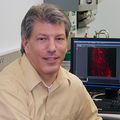Human In Vitro Vascularized Tissue Models
-
James (Jay) Hoying, PhD
Chief Scientist, Advanced Solutions Life SciencesBIOGRAPHY
Tissue models, including organoids, are proving valuable in modeling human tissue health and disease for a variety of applications. This is due, in part, to the dynamic cell-cell interactions important in tissue function fostered within the 3D tissue-like space. To this end, the more these models can recapitulate the different interactions found in native tissue, such as that between parenchyma and the microvasculature, the better the fidelity of the model. The microvasculature, which is comprised of a spectrum of cell types and matrix proteins, provides not only perfusion in its support of tissue health, but also cellular interactions and biochemical dynamics important in tissue phenotype and function. We have developed a generalized strategy for creating human, vascularized tissue models for research and therapeutic applications using isolated, intact human microvessel fragments to generate a neovasculature within the fabricated tissue bed. By isolating intact microvessels, instead of dissociated single vascular cells, we have retained the full complement of vascular and vascular-related cells intrinsic to the native microvasculature. With this strategy, we have fabricated vascularized thick tissue constructs and organoids useful in research, pharmaceutical and autologous therapeutic applications and demonstrate that the integrated microvasculature imparts new functionality to the constructs and organoids.
Learning Objectives:
1. Define an effective in vitro tissue model
2. Identify the features of a microvasculature
3. Explain the approaches for building in vitro tissue models
Please update your information
Certificate of Participation
DOWNLOAD CERTIFICATE






